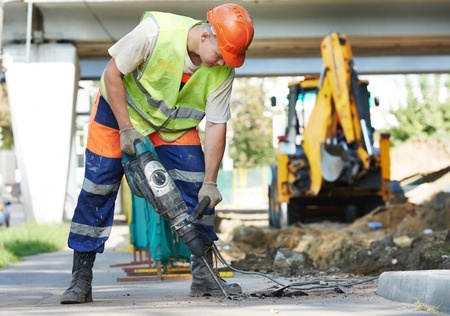[ad_1]
If you work in manufacturing, construction, or even in certain jobs within the service sector, you probably already know you work in a loud environment. But here is what you might not know: every year, 30 million people in the United States are exposed to dangerous noise levels at work. Thousands of people endure hearing loss as a result of these high noise levels, and worker’s compensation claims due to hearing-related disability are approximately 242 million dollars every year.

hearing.
High noise levels at work can have serious repercussions, including emotional stress and reduced productivity. Excessive noise levels can interfere with communication and concentration, making it hard to hear warning signals or even someone shouting a warning, resulting in workplace accidents or injuries.
We know it is healthier to work in a quiet environment, but for millions of people, noisy work is a way of life. The good news is that there are steps you can take to protect yourself from dangerous noise levels, and the law is on your side when it comes to protecting your hearing.
Does your workplace have a hazardous noise level?
There are a couple of ways you can determine whether the noise level in your workplace is hazardous to your hearing. The first is the “arm’s length rule”: if you have to raise your voice to be heard by a co-worker an arm’s length away, the noise level is potentially dangerous. You can also test the noise level using a sound level meter app on your smartphone. Any noise levels above 85 dB should be a cause for concern, especially with extended exposure that occurs over an eight-hour workday.
Other factors that affect how noise levels affect workers include:
- Duration of exposure
- Impulsiveness – noises with abrupt starts and stops (such as hammering)
- Periods of intermittence
The role of OSHA
If you suspect hazardous noise levels at work, the first thing you need to know is the Occupational Health and Safety Association, or OSHA, sets legal limits on noise exposure in the workplace. The limits are based on a worker’s time weighted average, and OSHA has set a Personal Exposure Limit (PEL) of 90 dB per worker for an eight-hour day. It is important to note that the 90 dB limit has a 5 dB exchange rate. Simply put, this means that for every 5 dB of sound increase, the time a worker can be exposed to the sound is reduced by half. For example, a worker can legally be exposed to sounds at 90 dB for eight hours. If the sound increases to 95 dB, exposure time must be limited to just four hours. At 100 dB, exposure time must be limited to two hours.
Setting legal limits isn’t enough. By law, employers in the manufacturing and service sectors must implement a complete hearing conservation program. Hearing conservation programs may differ slightly by industry, but in general there are eight mandatory components. Employers must:
- Measure noise levels.
- Implement certain engineering and administrative controls.
- Provide free annual hearing exams to employees.
- Provide free hearing protection to employees.
- Provide training on proper use of hearing protection and education about danger of high noise levels.
- Perform evaluation of hearing protection program.
- Perform audits of hearing protection program.
- Keep thorough records of noise level monitoring.
There are exceptions to the hearing conservation program rule. Instead of implementing a hearing conservation program, an employer has the right to make changes to both engineering controls (such as those made to tools, processes or equipment) or administrative controls (such as changes to schedules) so employees are exposed to less than 90 dB over the course of eight hours. Changes in both of areas of control can reduce noise to a safe level.
Know your rights
What should you do if you think you need hearing protection but it hasn’t been provided? The first thing to do is ask for it. If your employer refuses to provide hearing protection, you can contact OSHA to request an inspection of your workplace. The results of the inspection will be an indicator of the actual noise level and working conditions, which will then determine whether hearing protection is necessary.
You have rights as an employee, and employers are legally mandated to provide a safe and healthy workplace for you. OSHA is there for you and prevents employers from retaliating against workers for exercising their rights under the law. That means an employee can bring to light a health or safety concern or report an injury without fear of repercussion such as firing, reduced hours, pay cuts or harassment.
Despite your rights as an employee, it is still important to be your own advocate. Get familiar with your company’s policies regarding hearing protection as well as with your rights under OSHA. If you suspect you have work-related hearing loss, check your state’s worker’s compensation statutes; they differ from state to state. Hearing loss doesn’t qualify in certain states because it is not considered an “accident,” whereas other states recognize hearing loss as a compensable work injury.
If you have questions, need to ask for an inspection or file a complaint, you can contact OSHA offices by State via their website or call 1-800-321-OSHA (6742). OSHA will keep your information confidential. Other valuable worker protection information, such as Workers’ Rights and Employer Responsibilities can be found at the OSHA’s Workers’ page.
Above all, if you work in an industry that exposes you to hazardous noise levels, pay close attention to any changes in your hearing. If you are experiencing a feeling of fullness in your ears, if sounds are muffled or you have ringing in the ears (tinnitus), see a hearing healthcare professional right away for a hearing exam. Getting immediate treatment might prevent hearing problems from becoming worse down the road.
[ad_2]
Source link

